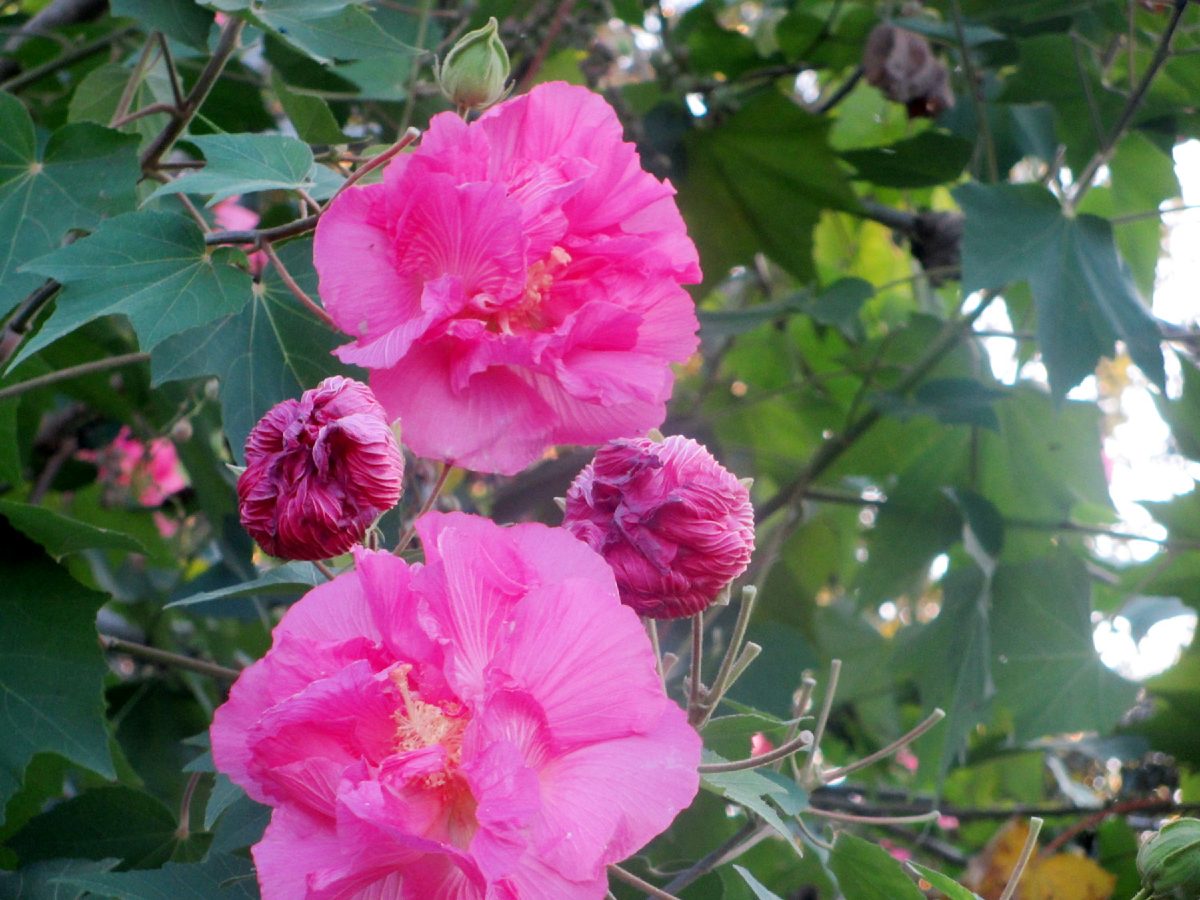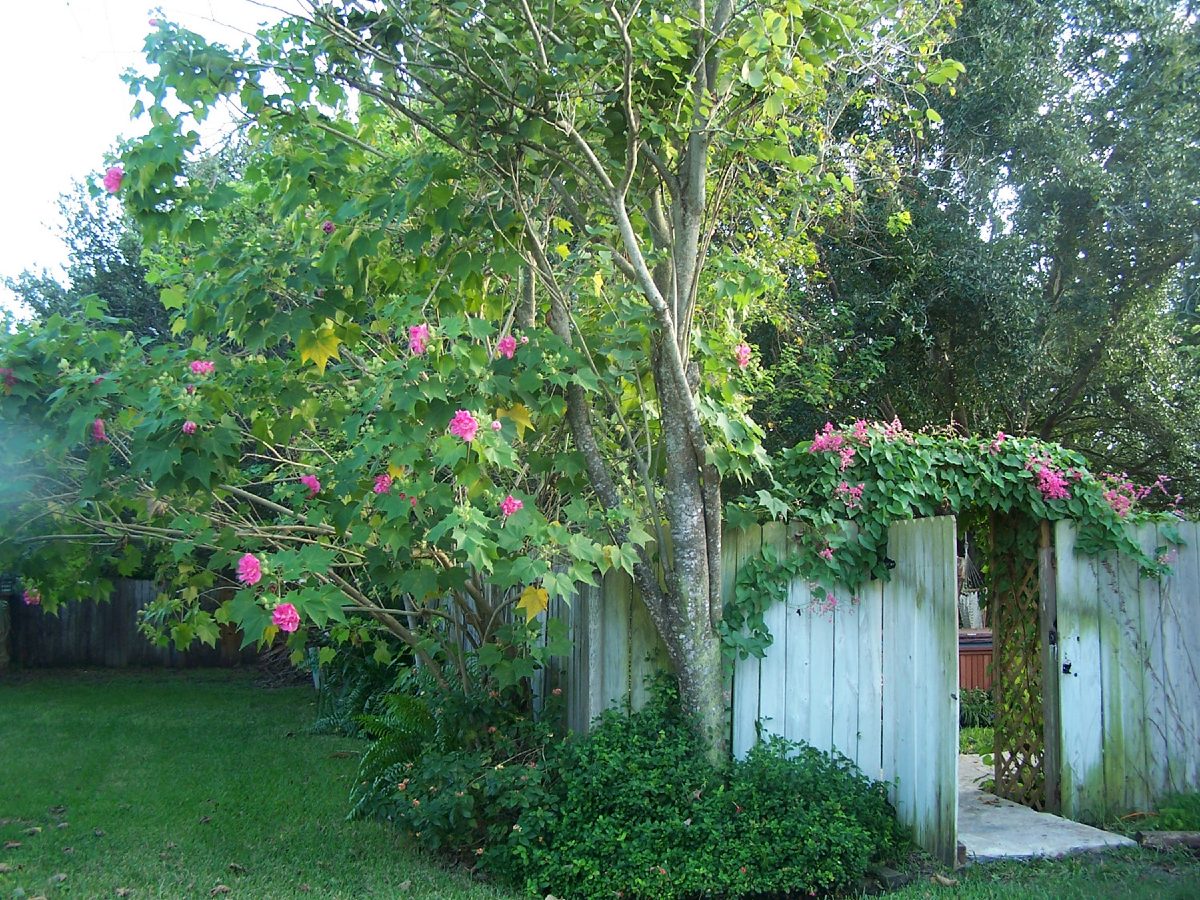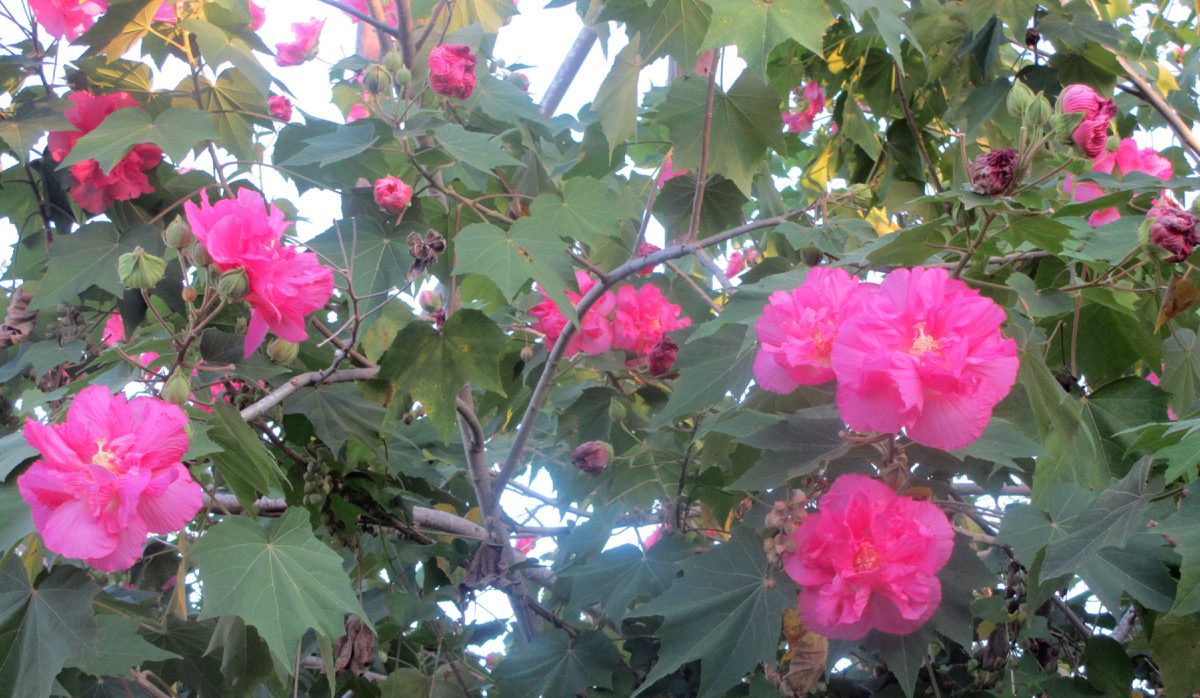Lori Murray, Special to the Star
By Lori Murray, Special to the Star
The plant we call Confederate Rose is not a native of the South nor is it a rose. Hibiscus mutabilis is an old fashioned shrub hibiscus native to China. If it doesn’t freeze back, the Confederate rose can reach heights of 12 – 15 feet with a woody trunk, but it is more typically a multi-trunked bush about 8 feet in height.
At one time, the Confederate Rose was very popular in the Confederate States of America and that’s how it got its common name. It’s also called the Dixie Rosemallow or the Cotton Rose as its buds resemble the bolls on a cotton plant. The flowers are large, 4 – 6 inches in diameter, and can be single or double.
Here in the Valley it generally blooms in October, like the Kapok tree, and provides a lovely show of color when some of our other bloomers are fading. My Confederate Rose is the “Plenus” variety that opens with pink double blooms that stay pink until they darken as they begin to wither, but other varieties of the Hibiscus mutabilis offer different changes of color.
Some have flowers that are white in the morning, turn pink at noon, and red in the evening of the same day. Others open white or pink and change to red by the end of the day. Still others stretch the entire procedure over three days. The leaves of the H. mutabilis are very large (5 – 7 inches in diameter) deeply lobed, and bright green. They have a coarse texture that gives the plant a distinctive look, and provides interest in summer.
The shrub can be used as part of a mixed shrub border, but it is truly spectacular free-standing. It is at its best when it has been allowed to grow with minimum pruning into a natural oval shape. One of the nicest characteristics of this plant is that it is low maintenance. Like most plants, it prefers rich, well-drained soil but it adapts quite well to most locations and soil conditions. It takes sun or shifting shade. It takes fertilizer but can live without it. It thrives on regular watering but is also very drought tolerant. It is hardy in our zone and its cuttings are easy to root. It practically takes care of itself!
Prune Confederate Rose in November and December after it blooms, but keep pruning to a minimum. Prune weak growth or diseased wood and remove branches that are crossing, crowding, or rubbing other branches. Any stem that appears overly long and weak should be cut one-half to one-third of the way down the length above at least two nodes, and at the usual 45 degree angle.
Remember to always keep your pruner clean (Lysol wipes accomplish what’s needed and are very convenient.) Mulch in autumn to moderate soil temperature and moisture in the winter, or don’t mulch and the shrub will do just fine. Remember, however, that in the event of a freeze roots can be damaged. Any stem that freezes should be pruned back to the ground in spring. After flowering, a round hairy capsule forms. It then dries and releases fuzzy seeds which can be the start of a new bush.
Cuttings can be taken at any time but they seem to root easiest in the spring. To root cuttings, plant pencil-sized pieces in a mixture of 1:3 peat moss to sand. Keep the container warm and moist. Roots usually appear in four to five weeks, but wait a few more weeks for the roots to mature before moving the plant to a larger container or a bed.
If you want to combine the Confederate Rose with other plants, Dr. William C. Welch, professor and horticulturist at Texas A&M University, notes that some landscapers plant daylilies, lantana, zinnias, portulaca, purslane, or other summer annuals in front of their hibiscus.
SOURCES:
William C. Welch. Hardy Hibiscus. www.aggie-horticulture.tamu.edu
homeguides.sfgate.com







